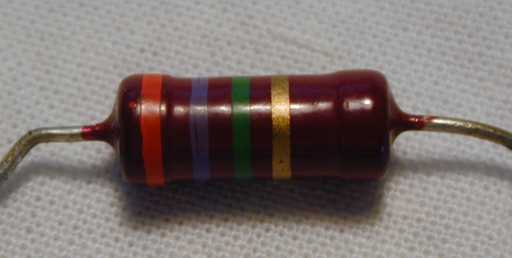Resistor
Resistor are designed to Resist current. That is they limit flow. They are one of the most common electronic components you will come across.
They come in a few forms - the most common being a small cylinder in shades of brown or blue with a set of coloured bands and two wires sticking out.

You may find some in larger sealed packages with the value printed on them.
Another form are resister networks/packs - a SIL or DIL chip - with many resistors on it, often with the same value- and sometimes sharing a common connection. Resistor packs are useful if you are going to use many resistors of the same value.
You will note there are two symbols for resistors. I tend to use the simpler of the two as it is easier to draw, although the latter is more distinctive. Whichever convention you use - try to stick to it, at least use the convention in one diagram!
I, like many others, like to use water pipe analogies to explain electronic components. Imagine a pipe that is thinner than others - less water will flow through the pipe, although the water flow rate will be faster.
Resistance in electronics is usually represented by the equation V=IR - that is, the voltage (V) across two points is equal to its resistance ®, multiplied by the current ®. This can be written in other forms - I=V/R - so if you increase the resistance, on a constant voltage device, then the current will decrease. Back to the water pipe - this means voltage is the flow rate, and the current is the flow amount.
Resistor Colour Bands
| Colour Band | Numeric Value | Multiplier | Tolerance |
|---|---|---|---|
| Black | 0 | 1 | |
| Brown | 1 | 10 | 1% |
| Red | 2 | 100 | 2% |
| Orange | 3 | 1000(1k) | |
| Yellow | 4 | 10k | |
| Green | 5 | 100k | |
| Blue | 6 | 1M | |
| Violet | 7 | 10M | |
| Gray | 8 | 100M | |
| White | 9 | ||
| Gold | 0.1 | 5% | |
| Silver | 0.01 | 10% |